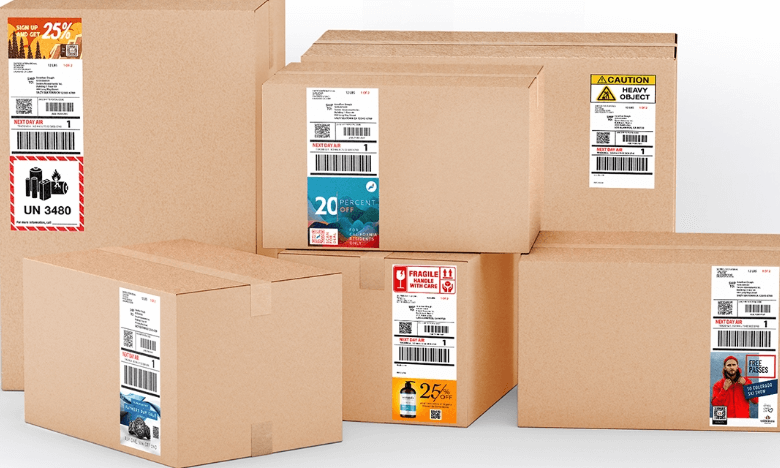Color Shipping Labels: The Friendly Way to Keep Inventory Batches in Check

Managing inventory can be a handful, especially when things get busy. One wrong label can throw off an entire shipment or delay orders. That’s why more and more businesses—big and small—are turning to color-coded shipping labels. They’re an easy, visual way to bring order to the chaos, especially when you need to track batches quickly and accurately.
Whether you’re packing boxes in a cozy eCommerce setup or overseeing a large warehouse team, color-coded labels can make your workflow smoother and more efficient. In this guide, we’ll walk you through why they work, how to use them, and how to set your team up for success.
Why It’s Important to Keep Inventory Batches Organized
Think of inventory batch control as a way to group and keep track of your products based on shared traits. You might group by:
- Date a product was made or received
- Product type or size
- Storage location in the warehouse
- Quality inspection status
- Orders for specific customers
Doing this well helps you:
- Quickly trace back items if there’s a recall
- Stick to first-in, first-out (FIFO) inventory practices
- Clear out old inventory before it expires or becomes outdated
- Avoid sending the wrong items to customers
Without a clear way to spot and separate batches, mistakes are almost guaranteed. That’s where a splash of color can make a big difference.
What Are Color-Coded Shipping Labels, Really?
Color-coded shipping labels are just what they sound like—labels in different colors that help tell you something important at a glance. Unlike black-and-white labels, colored ones stand out immediately and help warehouse staff move faster.
You can assign colors to represent:
- Specific product batches
- Dates (like when it was made or packed)
- Zones in the warehouse
- Product types (fragile, refrigerated, luxury, etc.)
- Quality check status (approved, waiting, failed)
It’s like giving your inventory a set of colorful uniforms. Easy to spot, hard to mix up.
Big Benefits of Color-Coded Labels
1. Speedy Picking and Packing
Workers can spot the right batch by color instead of reading tiny print. It saves time, especially in large warehouses.
2. Fewer Mistakes
When colors are used well, they act as a visual check that helps prevent someone from grabbing the wrong item.
3. Easier Batch Tracking
If you ever need to recall a product or check where it came from, colored labels make it faster to find the right group.
4. Better Stock Rotation
If colors match production dates, you can make sure the oldest items go out first, keeping your inventory fresh and organized.
5. Instant Visual Checks
Managers can take one look at the shelves and know which batches are where—no need to scan everything line by line.
Real-Life Examples: Where These Labels Shine
Food & Beverage
Color-coded by date or shift makes rotating stock easier and helps avoid spoilage.
Pharmaceuticals
Ensures the right medicine batch gets shipped—and makes compliance tracking more manageable.
Fashion and Retail
Tag seasonal styles with different colors to simplify promotions and merchandising.
Online Stores
Assign label colors by shipping method to avoid the dreaded wrong carrier situation.
Manufacturing Floors
Use green for approved batches, yellow for pending checks, and red for items needing rework.
Getting Started with Color-Coded Labeling
1. Make a Color Plan
Think about what makes the most sense for your workflow. Will colors represent months, product types, or inspection status?
Examples:
- Red = January
- Blue = February
- Green = March
Or:
- Yellow = Perishable
- Orange = High-value
- Purple = Needs review
Whatever you choose, be consistent—and teach your team what each color means.
2. Pick the Right Labels
Your labels need to match your work environment. Depending on where you store or ship items, your labels might need to be:
- Waterproof
- Tear-resistant
- Heat- or cold-resistant
Betckey makes a wide variety of thermal labels in many colors and adhesives, and they work well with popular printers like Zebra, Dymo, and Rollo.taba squishy website
3. Use the Right Printer
Thermal printers are your best bet for clean, fast label printing. Direct thermal is perfect for short-term use, while thermal transfer labels are better for longer-term needs.
4. Connect with Your Inventory Software
If possible, connect your label printing system with your inventory management software. It’ll save time, reduce errors, and help you automate batch tracking.
Recommended Labels from Betckey
At Betckey, we know labels aren’t just stickers—they’re an essential part of your workflow. That’s why we offer high-quality direct thermal labels in multiple colors, sizes, and strengths.
Whether you’re organizing batches in a big warehouse or running a home-based online shop, our labels help you:
- Tell products apart instantly
- Reduce costly picking errors
- Keep your space visually organized
Need something custom? Or just a batch of red, yellow, or green labels? We’ve got you covered.
FAQs
1. What colors should I use for batch control?
There’s no one-size-fits-all answer. Choose bold, contrasting colors that are easy to see in your warehouse. Red, green, blue, and yellow are great starting points.
2. Can I use my current thermal printer with colored labels?
Absolutely! As long as the colored label roll is compatible, your printer can still print barcodes and text right on top.
3. Are color-coded labels more expensive?
They can cost a little more than plain ones, but the time you save—and the errors you avoid—can pay off big time. Especially when you buy in bulk from trusted suppliers like Betckey.


